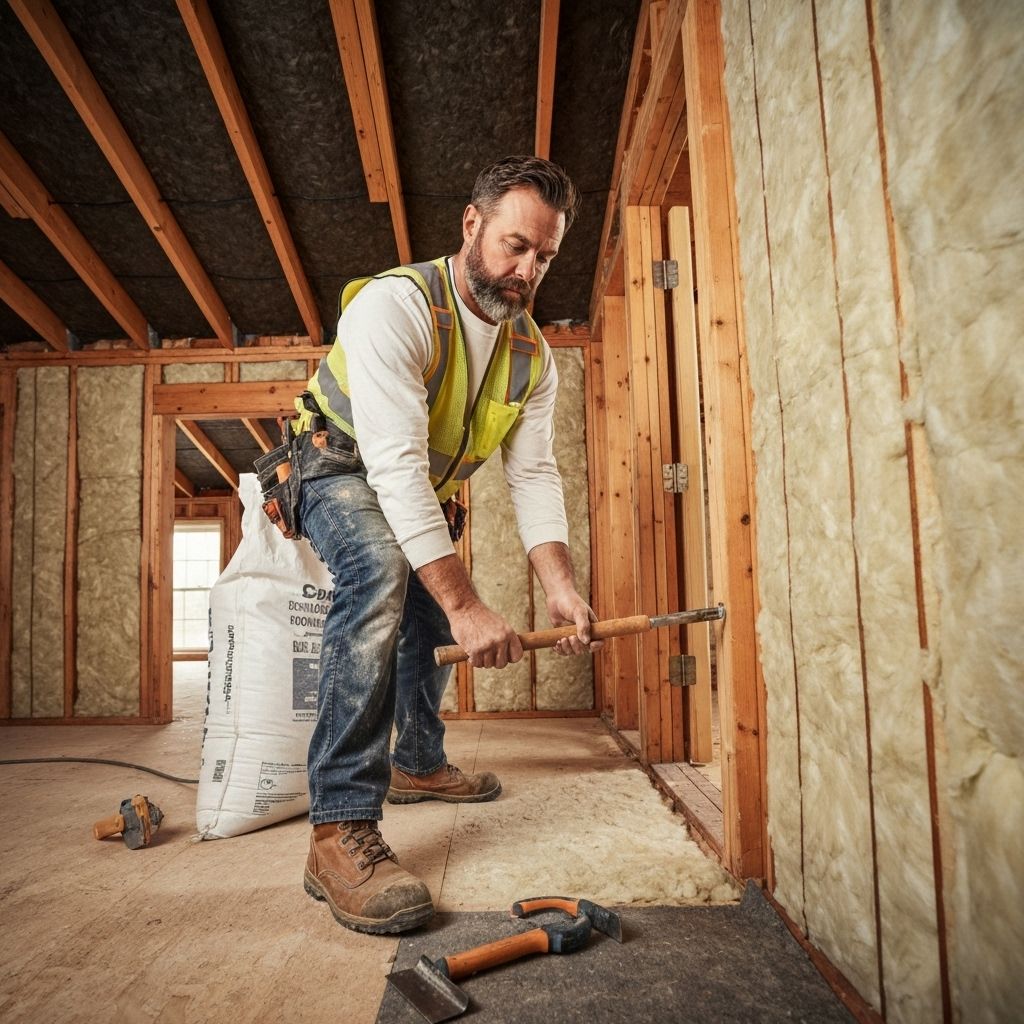Beneath the Surface: Understanding Roof Space and Lower Level Thermal Protection

When it comes to making your home cozy, energy-efficient, and a wise investment, the importance of proper insulation cannot be underemphasized. Many property owners overlook the critical role that attic and cellar insulation play in controlling temperature, reducing energy costs, and improving overall home performance. Understanding the details and aspects of insulation can discover the solution to a more comfortable living environment while lessening your carbon footprint and elevating indoor air quality.
In this manual, we will examine everything you need to know about home insulation , from ways to check your home's insulation levels to the distinctions between roll and blown-in insulation. Whether you're considering a DIY attic insulation project or looking to provide insulation for your basement, we will provide guidance into insulation materials, R-values, and the typical mistakes to avoid. Discover how Insulation contractor can not only keep your home enjoyable year-round but also boost its value and prolong the life of your HVAC system. We will delve beneath the surface and uncover the necessary information necessary to make educated insulation choices for your home.
Comprehending Types of Insulation
Regarding home insulation, there are multiple kinds to examine, all with its unique characteristics and benefits. Batt insulation, made from fiberglass or rock wool, comes in ready-made panels that fit between the bones in partitions or roof beams in roofs. This form is well-liked for its ease of installation and affordability. It's often used in new constructions and renovation projects and provides reasonable thermal resistance while also helping to lessen sound.
Loose-fill insulation, typically made from plant fibers or synthetic fiber, involves pumping loose material into ceilings or spaces using custom equipment. This process allows for more flexibility in covering irregular spaces and can help achieve a elevated R-value in hard-to-reach areas. Blown-in insulation is particularly efficient in attics, where ventilation gaps can contribute to energy loss during winter months and high heat during summer, making it a adaptive choice for countless property owners.
Spray foam insulation is one more alternative that has gained popularity in the last few years. It is sprayed as a fluid that broadens to stuff gaps and fissures, providing an airtight seal. Not only does spray foam offer excellent insulation properties, but it also works as a vapor barrier, shielding your house from moisture damage. Every of these insulation types has its pros and disadvantages, which makes it important to evaluate your specific needs when selecting the appropriate option for your home.
DIY Insulation and Sealing Air Leaks

Starting on a DIY insulation project can seem daunting, but with the proper equipment and understanding, you can significantly improve your home's energy efficiency. Begin by evaluating your attic and basement, as these areas often need the greatest attention. Use a flashlight to check for any obvious gaps, cracks, or areas missing insulation. Spending time to examine these spaces can help reduce your costs on your energy bills and enhance your overall comfort.
Once you locate areas that need insulation, consider the type that suits your needs most effectively. Batt insulation is easy to install in standard stud frames, making it a popular choice for attics and walls. On the flip side, blown-in insulation is ideal for filling in non-standard spaces or getting high levels of insulation in existing areas. Don't forget to wear protective gear, including gloves and a mask, when handling insulation products. This protective equipment is crucial to safeguard against dust and possible irritants.
After installing insulation, air sealing is the next important step to ensure effectiveness. Use caulk for small gaps and foam insulation for larger openings around windows, doors, and plumbing. Pay special attention to any drafty areas you identified during your initial inspection. Sealing these cracks not only enhances your newly installed insulation's performance but also improves your HVAC system's efficiency, making your home more cozy year-round.
Thermal insulation Benefits and Value
Investing in insulation provides many advantages which extend further than simple temperature control. One of the most significant benefits is energy efficiency. Proper insulation assists maintain a consistent indoor climate, reducing the workload on heating and air conditioning systems. This leads to reduced utility bills, enabling homeowners to save money over time. By ensuring that your home is properly insulated, you can also help reduce your carbon footprint, making a positive impact on the environment.
Another key feature of thermal insulation is its function in increasing property value. Homes with efficient insulation are often more attractive to potential buyers, as they provide a significantly comfortable living environment and lower energy costs. A well-insulated home is also less likely to issues like mildew and moisture, which can scare away buyers. Thus, when considering a home improvement project, upgrading insulation can be seen as a subtle upgrade that pays off in the long run.
Additionally, insulation contributes to enhanced indoor air quality and noise reduction. Proper fitting minimizes drafts and stops outdoor pollutants from getting into the home, creating a healthier living space. Moreover, different insulation materials can effectively dampen sound, rendering your home more silent and more peaceful. By grasping the varied value of thermal insulation, homeowners can make informed decisions that enhance their comfort, finances, and overall home condition.
